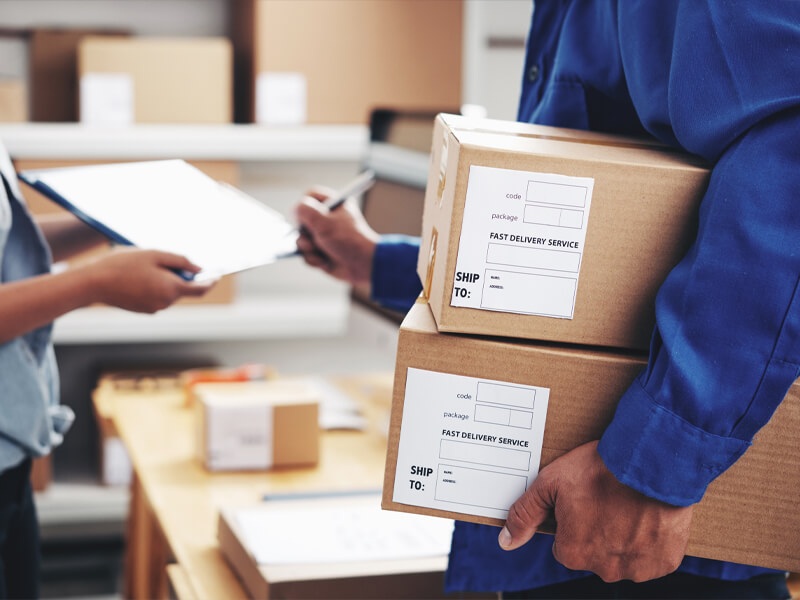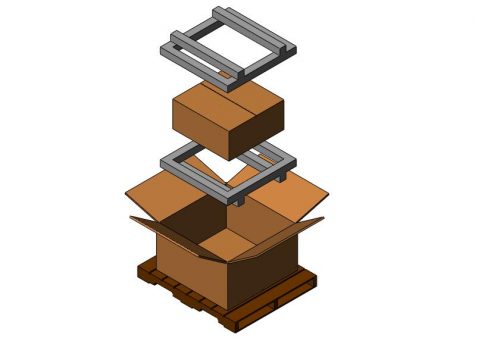Processing Company Expertise: Opening Performance in Production
Processing Company Expertise: Opening Performance in Production
Blog Article
Efficient Industrial Recycling Solutions for Sustainable Packaging: A Comprehensive Overview
That's where this extensive guide on reliable industrial recycling solutions for lasting product packaging comes in. By checking out key areas such as packaging material selection, developing for recyclability, executing reusing framework, teaming up with reusing companions, and monitoring and gauging reusing success, this overview will outfit you with the understanding and devices necessary to make educated choices and drive positive adjustment within your organization. Whether you're a product packaging specialist, sustainability supervisor, or just interested in the topic, this overview will supply valuable understandings and techniques to help you navigate the globe of sustainable product packaging.
Product Packaging Material Option
The option of product packaging materials plays a critical function in guaranteeing the sustainability of industrial reusing solutions. When it pertains to lasting product packaging, the choice of products is crucial in lessening ecological impact and taking full advantage of recycling effectiveness. Picking the best materials can help in reducing waste generation, preserve resources, and advertise a circular economic climate.
One crucial factor to take into consideration in packaging product choice is recyclability - plastic container manufacturer. Products that can be conveniently recycled and integrated back into the manufacturing cycle are preferred. For instance, materials like cardboard, paper, glass, and specific kinds of plastics can be reused numerous times without shedding their high quality. On the other hand, products that are difficult to reuse, such as combined plastics or non-recyclable compounds, can create obstacles for the reusing procedure and might wind up in landfills or incinerators.
Another factor to consider is the use of eco-friendly and naturally degradable products. Product packaging made from sustainable sources, such as plant-based plastics or biopolymers, can aid lower dependency on fossil fuels and mitigate climate adjustment. Additionally, biodegradable products damage down naturally gradually, reducing the accumulation of waste in garbage dumps.
In addition, the weight and volume of packaging products ought to be lessened to decrease transport expenses and energy usage. Lightweight materials not just call for fewer sources during manufacturing yet also contribute to lower carbon discharges throughout transport.
Creating for Recyclability
In order to guarantee the recyclability of packaging materials, thoughtful design is important. Designing for recyclability includes producing packaging that can be quickly sorted, separated, and processed in recycling facilities. One essential aspect of developing for recyclability is the choice of materials. Product packaging designers ought to prioritize making use of products that are commonly accepted for recycling and have actually developed recycling infrastructures. Materials such as glass, light weight aluminum, and particular kinds of plastic, like family pet and HDPE, are generally reused and must be favored over products that are expensive or challenging to recycle.
One more crucial consideration in designing for recyclability is the removal of unnecessary elements or materials. By reducing the variety of layers, finishes, and additional components, product packaging can be made simpler and less complicated to reuse. Furthermore, designers need to intend to reduce using blended materials, as they can complicate the reusing procedure.

Implementing Recycling Framework
Reliable execution of recycling facilities is crucial for the success of industrial recycling options. Without appropriate facilities in position, the reusing procedure becomes ineffective and inefficient, preventing the overall objective of lasting packaging.
To apply reusing facilities properly, numerous essential factors require to be thought about. To start with, there need to be an efficient collection system that facilitates the separation and collection of recyclable materials. This can include assigned recycling bins in public spaces, along with partnerships with waste administration firms for curbside pickup and sorting.
When collected, the recyclable materials need to be carried to recycling centers in a prompt fashion. This requires efficient logistics and transportation networks, making sure that the products get to the ideal centers immediately.
At the recycling facilities, advanced sorting and handling modern technologies must be in location to divide various kinds of products effectively. This consists of the use of automated arranging machines, optical scanners, and hand-operated sorting methods.
Furthermore, there need to be a durable market need for recycled materials. This can be attained through partnerships with suppliers and industries that use recycled materials in their manufacturing procedures. Developing a stable market for recycled materials incentivizes the recycling market and promotes the circular economy.
Working Together With Recycling Partners

One secret facet of collaborating with recycling companions is the facility of clear communication channels. It is vital to establish open lines of interaction to facilitate the exchange of info, updates, and responses. This permits both celebrations to stay educated concerning the progression of reusing campaigns and deal with any challenges or concerns that may arise.
In addition, collaboration can entail collaborations in executing and making recycling programs. Recycling partners can provide beneficial insights and guidance in developing efficient collection systems and identifying one of the most appropriate recycling innovations. By collaborating, services and recycling partners can enhance the reusing process and reduce waste.
Moreover, collaboration can extend beyond the functional facets of recycling. It can likewise incorporate advocacy and education initiatives. By joining forces, organizations and reusing companions can elevate understanding concerning the value of reusing and advertise the fostering of lasting product packaging methods among consumers and other stakeholders.
Monitoring and Measuring Recycling Success
To make certain the effectiveness of industrial recycling solutions and the success of lasting product packaging goals, it is vital for organizations and their recycling companions to establish a thorough system for tracking and determining recycling success (industrial packaging solutions). Tracking and measuring reusing success enables services to evaluate the impact of their reusing initiatives, identify locations for improvement, and established meaningful targets for future development
One method to track reusing success is through the usage of data collection and evaluation devices. By gathering data on the quantity of product packaging waste created, the percentage of waste that is reused, and the sorts of products being recycled, organizations can obtain valuable insights right into their reusing performance. This information can then be analyzed to determine patterns, patterns, and locations of inefficiency.
An additional crucial aspect of monitoring and measuring recycling success is establishing clear and standard metrics. This allows organizations to contrast their performance versus industry standards and track their progression in time. Metrics such as reusing rates, waste diversion rates, and greenhouse gas discharges can offer a quantitative step of a business's recycling success.

Verdict
In final thought, executing efficient industrial recycling options for sustainable product packaging calls for careful consideration of packaging material option, developing for recyclability, applying reusing infrastructure, teaming up with reusing partners, and monitoring and gauging reusing success. By including these techniques, companies can add to a more sustainable and environmentally-friendly strategy to product packaging, lowering waste and advertising the round economic climate.
By checking out key locations such as product packaging product choice, creating for recyclability, carrying out reusing framework, teaming up with reusing companions, and tracking and measuring reusing success, this guide will certainly furnish you with the understanding and devices needed to make educated choices and drive favorable change within your company. Product packaging developers need to focus on the usage of materials that are widely accepted for reusing and have established recycling frameworks.Cooperation with reusing partners is vital for the successful application of commercial recycling services and the accomplishment of lasting packaging objectives. By joining forces, companies and reusing partners can raise awareness concerning the importance of recycling and promote the adoption of sustainable product packaging methods amongst customers and other stakeholders.
By accumulating information on the quantity of packaging waste produced, plastic container manufacturer the portion of waste that is reused, and the types of products being reused, companies can obtain useful insights into their recycling performance.
Report this page